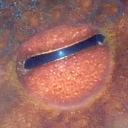Yahoo Answers is shutting down on May 4th, 2021 (Eastern Time) and beginning April 20th, 2021 (Eastern Time) the Yahoo Answers website will be in read-only mode. There will be no changes to other Yahoo properties or services, or your Yahoo account. You can find more information about the Yahoo Answers shutdown and how to download your data on this help page.
Trending News
A camera takes a properly exposed photo at f/5.6 and 1/500 s.?
What shutter speed should be used if the lens is changed to f/4.0?
Options:
1/125 s
1/250 s
1/500 s
1/1000 s
1/2000 s
6 Answers
- 1 month ago
What about ISO? It is also very significant value. Try to read about it, knowing ISO is a good way.
- BillandhiscatsLv 62 months ago
A good light meter will give you a list of settings in relationship to one another. You will still need to make your own choice of these selections dependant on the subject being photographed.
To continue simply guessing a lends and shutter speed with some form of calibration is ridiculous.
- SkyLv 72 months ago
The settings change by stops. If you open the aperture to let in 1 stop more light, you'd want to increase the shutter speed an equivalent amount to give it time to collect 1 stop less light, and vice versa if closing the aperture. You also have to factor in ISO, since that would allow you to keep the same shutter speed by decreasing ISO by 1 stop.
- ?Lv 72 months ago
f/4 is one full stop larger than f/5.6. Therefore the shutter speed must be adjusted to be open for 1/2 the time in order to maintain an equivalent exposure.
- How do you think about the answers? You can sign in to vote the answer.
- RobsteriarkLv 72 months ago
At f/4 the lens admits twice as much light as at f/5.6.
So to maintain the same total exposure the shutter speed should be set to half the time you had before as that admits half as much light.
That would be 1/1000th of a second.
If you’d gone the other way and set the aperture to f/11 then that’s two stops slower than f/5.6, so to compensate and maintain the same overall exposure value the shutter speed would need to be adjusted by two stops. That would have been 1/125th of a second.
The reason photographers call them “stops” os because on most old photographic film cameras and on many modern digital cameras, the rotary controls for aperture, shutter speed and film speed all had click-stops at each numbered position.
Look at the diagram below: each pair of values shown produces exactly the same EV (Exposure Value). If it included an ISO sensitivity scale then the bottom and top halves could slide one position each way for each change of ISO to maintain the same EV.








